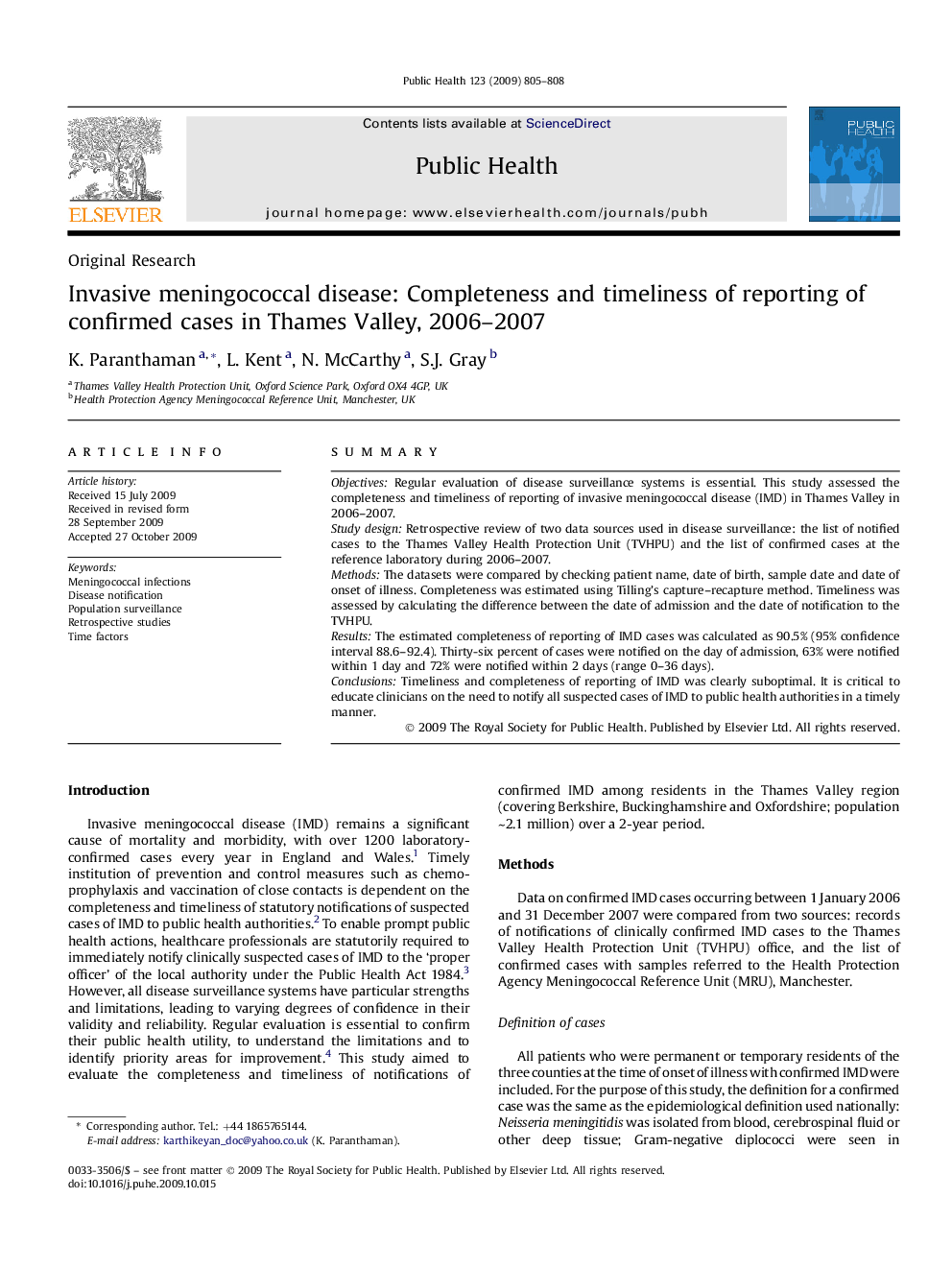| Article ID | Journal | Published Year | Pages | File Type |
|---|---|---|---|---|
| 1088823 | Public Health | 2009 | 4 Pages |
SummaryObjectivesRegular evaluation of disease surveillance systems is essential. This study assessed the completeness and timeliness of reporting of invasive meningococcal disease (IMD) in Thames Valley in 2006–2007.Study designRetrospective review of two data sources used in disease surveillance: the list of notified cases to the Thames Valley Health Protection Unit (TVHPU) and the list of confirmed cases at the reference laboratory during 2006–2007.MethodsThe datasets were compared by checking patient name, date of birth, sample date and date of onset of illness. Completeness was estimated using Tilling's capture–recapture method. Timeliness was assessed by calculating the difference between the date of admission and the date of notification to the TVHPU.ResultsThe estimated completeness of reporting of IMD cases was calculated as 90.5% (95% confidence interval 88.6–92.4). Thirty-six percent of cases were notified on the day of admission, 63% were notified within 1 day and 72% were notified within 2 days (range 0–36 days).ConclusionsTimeliness and completeness of reporting of IMD was clearly suboptimal. It is critical to educate clinicians on the need to notify all suspected cases of IMD to public health authorities in a timely manner.
